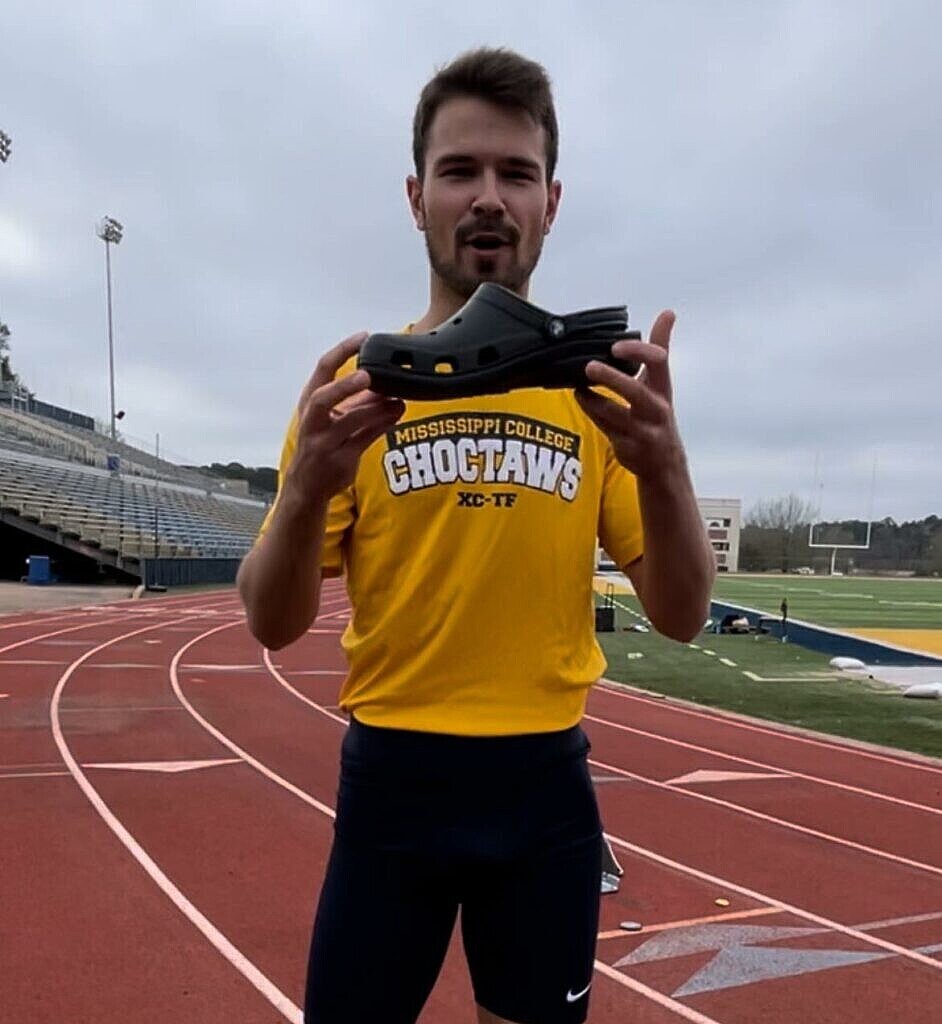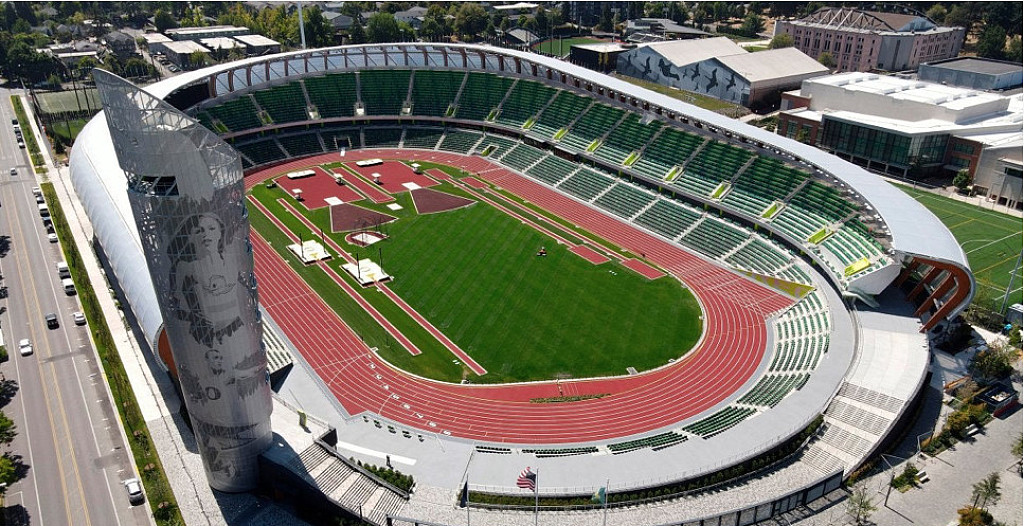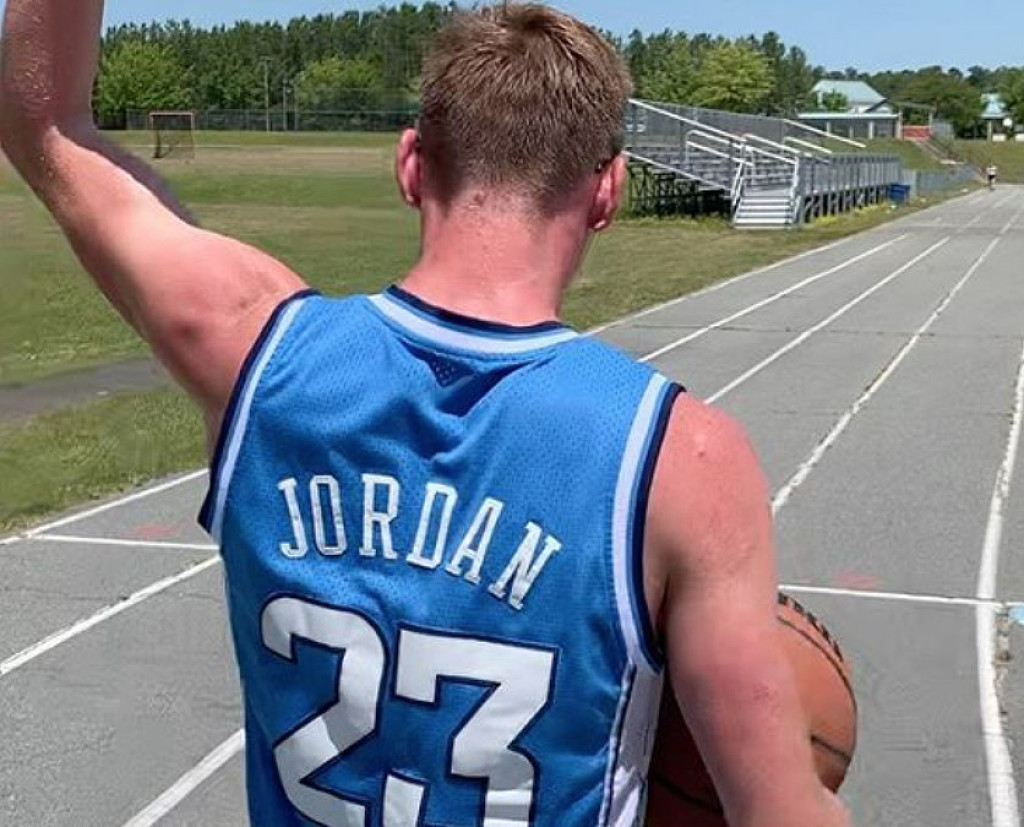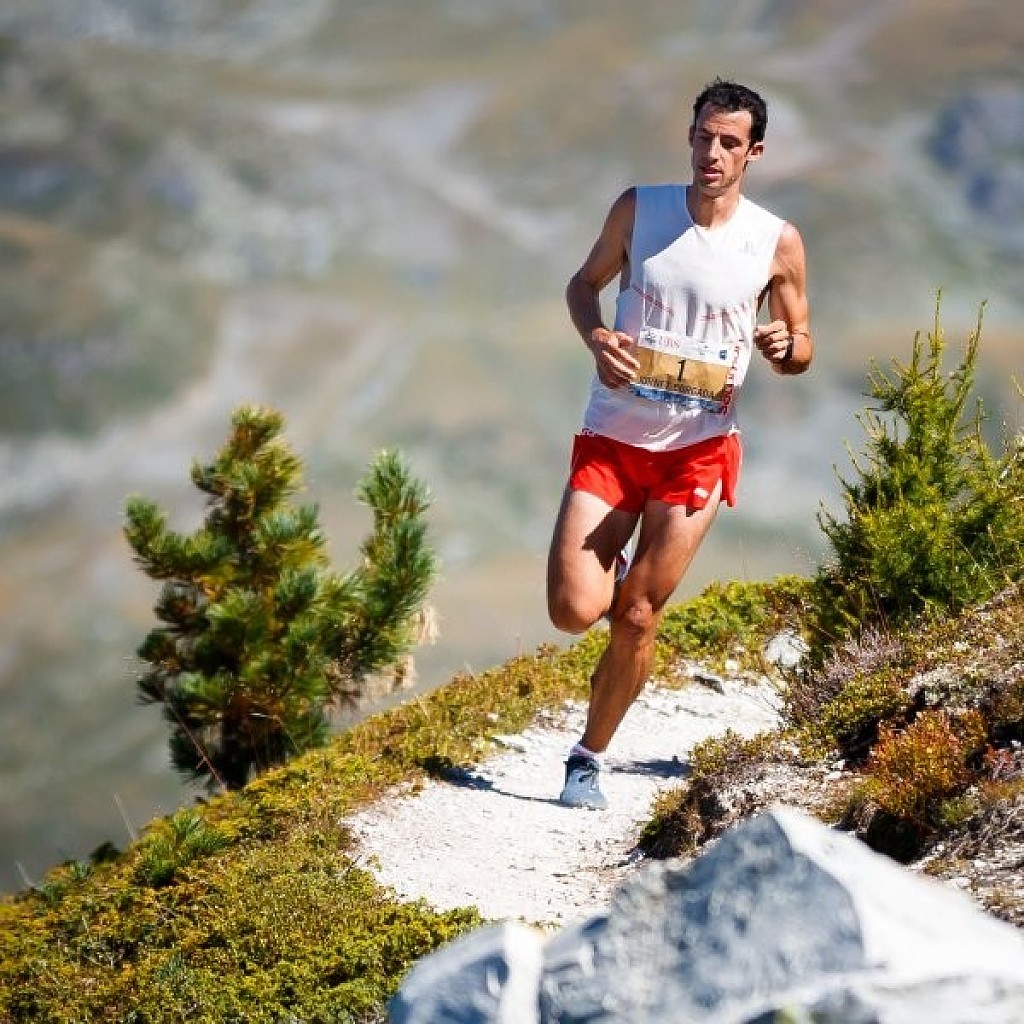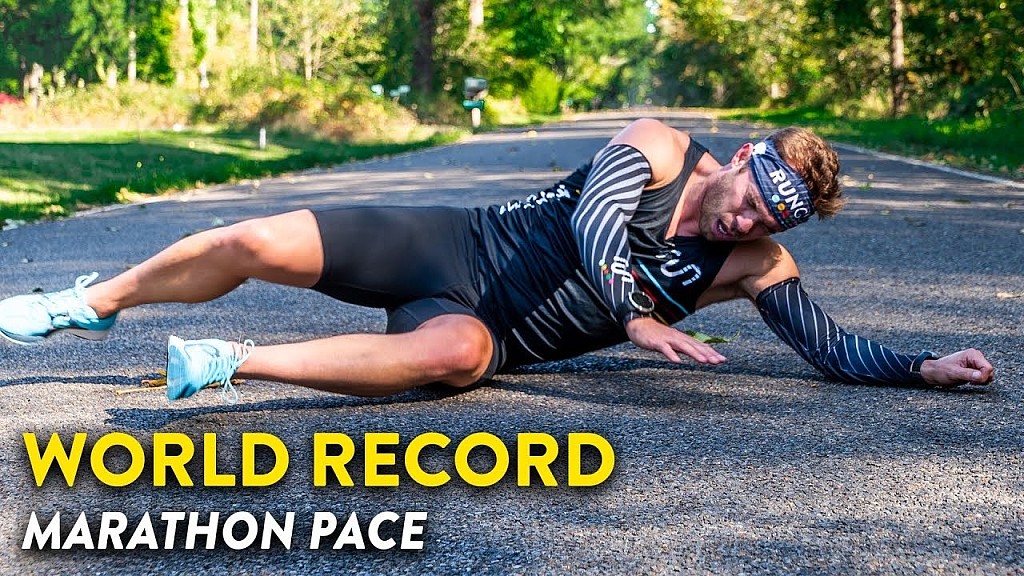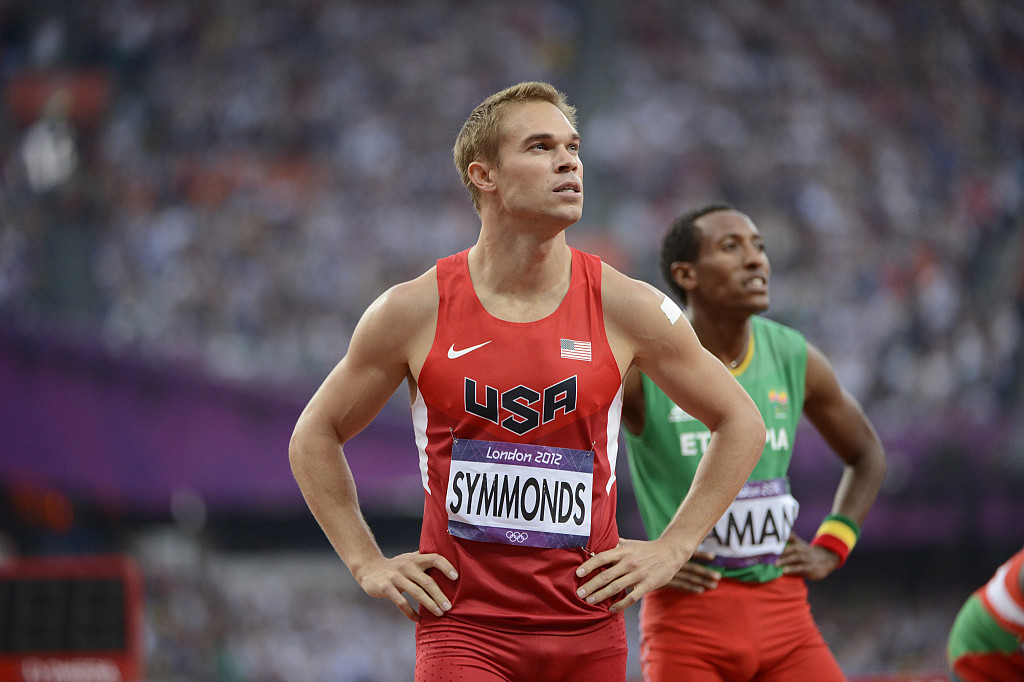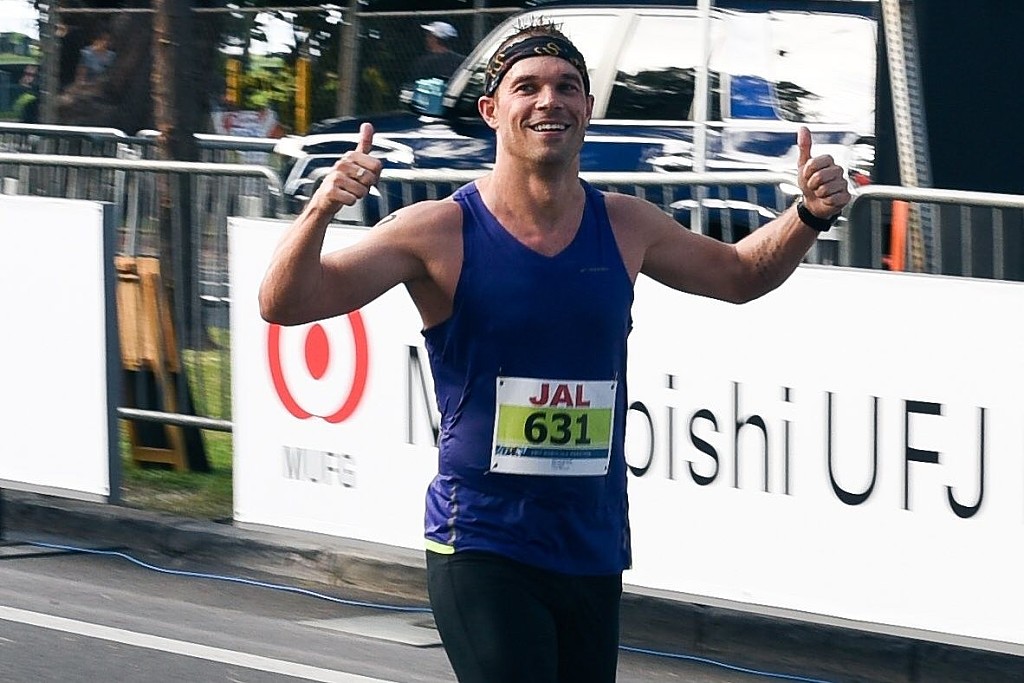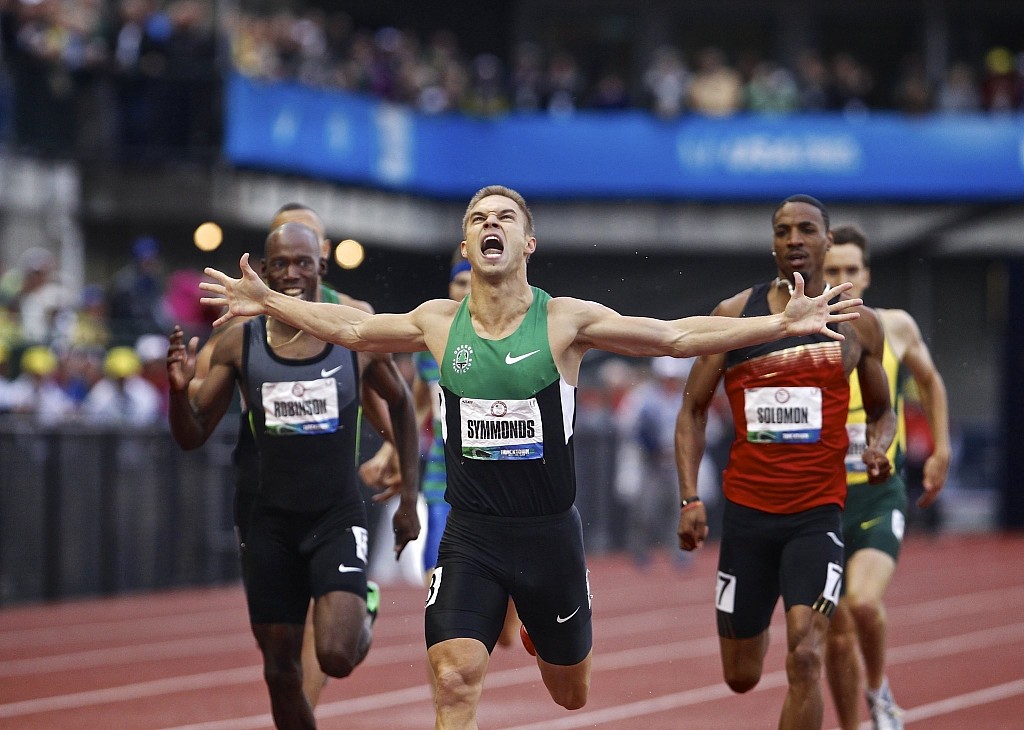Running News Daily
Running News Daily is edited by Bob Anderson. Send your news items to bob@mybestruns.com Advertising opportunities available. Train the Kenyan Way at KATA Kenya and Portugal owned and operated by Bob Anderson. Be sure to catch our movie A Long Run the movie KATA Running Camps and KATA Potato Farms - 31 now open in Kenya! https://kata.ke/
Index to Daily Posts · Sign Up For Updates · Run The World Feed
Articles tagged #Nick Symmonds
Today's Running News
Mississippi college student runs 51 second 400m in Crocs
Decathlete and Croc enthusiast Niklas Klei of Kirchlengern, Germany, did something remarkable in a pair of foam clogs last weekend. He broke the Guinness World Record for the fastest lap of a track in Crocs, clocking a ridiculous 51.84 seconds at a track at Mississippi College in Clinton, Miss.
Klei shattered the previous Crocs record of 52.06 seconds, set by his friend and NCAA competitor Will Eggers in June 2020. 2012 Olympic 800m finalist and YouTuber Nick Symmonds first put the record on the map in early 2020 when he ran 55.65 seconds. Symmonds’s original record-breaking video has been viewed more than 300,000 times.
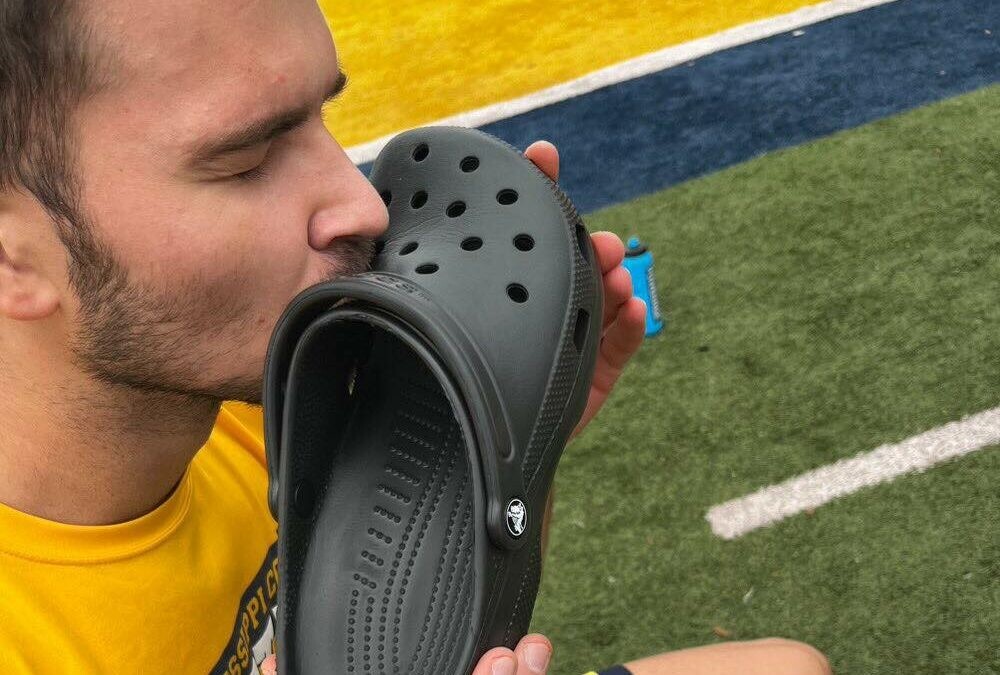
Klei told us that he did not practise running in Crocs before attempting the record, and accidentally ordered his record-breaking black pair one size too big, which made things tricky. “I wore three pairs of socks to fill the extra space, and my feet were still sliding,” Klei laughs. “Even ‘sport mode’ didn’t help me.” (Crocs commonly have two modes, sport and casual. Sport mode refers to using the back strap, adding additional support. The causal mode has the strap up (over the upper), and is more commonly used for kicking around or grabbing milk from the corner store.
Klei expressed that doing this challenge in causal mode would be extremely difficult. “Running in Crocs is harder than you think,” he laughs.
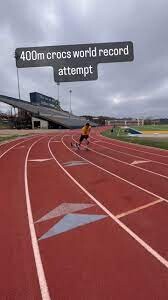
The 23-year-old holds a personal best time of 47.10 over 400m (wearing spikes) and finished third in the decathlon at the 2022 NCAA Division II Outdoor Track and Field Championships.
“I think a time under 51 or 50 seconds is possible, but with some proper fitting Crocs,” Klei says. Klei and Eggers hope to meet after the 2023 indoor season to settle who the faster runner in Crocs is.
by Marley Dickinson
Login to leave a comment
Will There Be Fans at the Hayward Field Olympic Trials? After 2020, holding the event at all will be a victory in itself
Compared to other pandemic-inspired dystopias, the rise of the avatar sports fan wasn’t horrible, so much as mildly depressing. The NBA’s Disneyland bubble (and recent All-Star game) had “virtual bleachers” where viewers could glimpse their spectral selves on screen. Then there was the strange analog equivalent where people paid $100 for the privilege of attending the Super Bowl as a cardboard cutout. In an era of increasing atomization, these images felt like a vision of a nightmare future where yet another in-person communal experience had been phased out. Last March, when asked about the prospect of competing in an empty arena, LeBron James’s initial response was, essentially, forget it. “If I show up to an arena and there ain’t no fans in there, I ain’t playing,” he said.
For track and field athletes, on the other hand, one could make the obvious joke that competing without spectators—as many runners did last year—would be business as usual. But even as having vacant seats at major championships remains a recurring issue for the sport, there are still places where, in pre-pandemic times, one could reliably find an infectious mass enthusiasm for watching fit people chase each other around the oval. In the United States, the most obvious example is, of course, Hayward Field in Eugene, Oregon, which is slated to host its fourth consecutive Olympic Trials in June. The venue’s combination of historical significance and high-energy fan base have always given it a special aura, colloquially referred to as the “Hayward Magic.” Even for those who don’t buy into the idea that occult forces might be wafting through the air of the Pacific Northwest, the quadrennial spectacle of the Trials at Hayward has delivered some big-time moments—starting in 1972 when Steve Prefontaine broke the American record in the 5,000-meters to punch his ticket to his first, and only, Olympic Games.
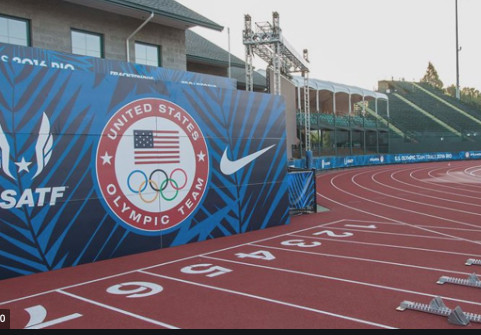
“This is a very special place for people who are really passionate about running,” says Eugene resident and two-time Olympic Trials champion Nick Symmonds. At the 2008 Trials, Symmonds was the first finisher in the famous “Oregon sweep” of the men’s 800-meters, where all podium spots were claimed by Eugene-based runners—to the roaring delight of the home crowd. While some have argued that it would be “better for the sport,” if U.S. track and field were less Oregon-centric, there’s no question that Hayward’s reputation for track fanaticism is justified. “At Hayward, you can have 10,000 people watching an early-season college dual meet,” Symmonds told me. According to a 2018 survey by the University of Oregon Foundation, the average attendance for weekday and weekend track meets at Hayward over the previous five years was 6,146 and 6,259 spectators, respectively. Those are impressive numbers for U.S. track and field. Symmonds told me that, as a professional, he had raced in national championships at other big venues across the country, like Des Moines and Sacramento, and likened the experience to competing in a “ghost town.” As he put it, “There was no one in the stands there to watch other than mom and dad.”
Unfortunately, the lingering reality of the pandemic might mean that even the Hayward Field Olympic Trials are destined for ghost town status. With fewer than 100 days to go (the Trials are scheduled to take place June 18th through 27th), it’s still uncertain whether spectators will be allowed to attend. COVID infection rates might be dropping as vaccines become more widely available, but the likelihood of packed stands by early summer seems remote.
“We are certainly hopeful that we will have fans at the Olympic Trials, but we are far from certain that that is going to be the case,” Michael Reilly, the CEO of TrackTown USA, the local organizing committee for the Trials, told me. Reilly generously pointed out that infection rates in Oregon had been “increasingly good.” Although the state is not yet allowing spectators at sporting events, Reilly said that his team was working with co-organizers like the United States Olympic and Paralympic Committee and USA Track and Field to apply for an exemption to submit to the governor’s office.
For now, the idea is to plan for a scenario in which fans will be allowed to attend with appropriate safety measures—testing, masks, social distancing, etc. (Reilly told me that it was still too soon to say whether the vaccine could play a role in any safety protocols.) “We are building operating plans that anticipate that spectators will be at the Trials,” Reilly told me. “If, for whatever reason, we can’t have fans, we will be prepared to go either way. Fortunately, many of the operations of the event, as it relates to conducting a track and field competition, really don’t depend on whether there are spectators.”
In a tantalizing irony, Hayward last year completed an extensive renovation that more than doubled its max seating capacity to 25,000. (The permanent seating capacity for the new facility is listed at 12,650, but it can be expanded to accommodate larger crowds.) The project, which is estimated to have cost around $270 million, transformed a relatively quaint facility into an opulent mega-stadium that includes a ten-story tower, a “hydrotherapy room,” and an on-site barbershop.
So far, the only athletes who have gotten to experience this architectural epiphany are members of the University of Oregon’s track and field team, leading Eugene’s Register Guard to posit that Hayward 2.0 is currently “little more than the most spectacular collegiate training facility in the nation.” As the paper reports, the university is hoping to host outdoor track meets later in the spring, culminating in the NCAA Outdoor Championships, which are scheduled to take place the weekend before the Trials.
Should both of these events end up happening without any spectators there’s still the silver lining that, hey, at least they weren’t canceled. And while it might be tempting to assume that all athletes prefer to race in front of a packed house, that, of course, isn’t necessarily the case. Molly Huddle, who won the women’s 5,000 and 10,000-meters at the 2016 Trials and will be looking to make her third Olympic team this June, told me that the first time she competed at a Hayward Trials in 2008, she was so stimulated by the crowd energy that she ended up running poorly. She says she had to consciously “de-sensitize” at subsequent Trials in order to run well enough to make the team. “It will probably not feel like Hayward, because of the new stadium and because there are no knowledgeable, dedicated fans there like there always are,” Huddle says about the prospect of competing at a spectator-less Trials. “Usually, I just try and pretend it’s just a mid-season meet to take the pressure off. So it will be easier to do that.”
Meanwhile, the organizing committee for the Tokyo Games has yet to decide on whether overseas fans will be allowed to attend. (According to a press release from the International Olympic Committee, a decision is expected in the coming weeks.) To be honest, it’s hard to imagine that there will actually be a ban on international visitors—not least because the Japanese government and the city of Tokyo reportedly spent more than $1.25 billion on the new Japan National Stadium—but, if 2020 has taught us anything, it’s to never say never.
by Outside Online
Login to leave a comment
North Carolina runner reclaims basketball mile world record in 4:33.73
Dylan Sorensen beat the previous record by just .02 seconds
In May, University of North Carolina (UNC) track coach Dylan Sorensen broke the world record for the fastest mile while dribbling a basketball. He ran an impressive 4:37 to beat the record by 15 seconds. In the months following Sorensen’s run, his record was lowered twice, and heading into his attempt on November 18, the time to beat was 4:33.75. He managed to win the record back, but he cut it close, running a 4:33.73, just 0.02 seconds quicker than the previous mark. Sorensen used his run as a chance to raise money for the FORevHer Tar Heels program, a UNC nonprofit for female student athletes.
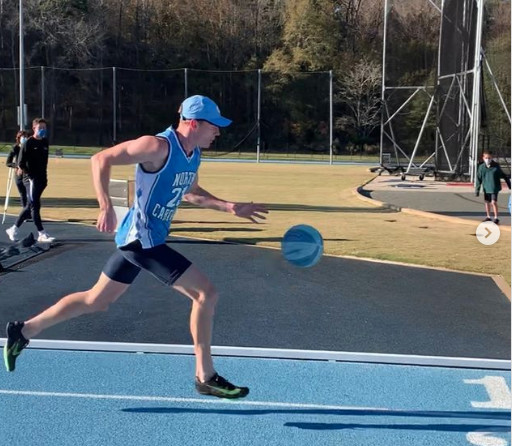
A popular challenge
Since former U.S. Olympian Nick Symmonds ran a world record time of 5:29 in August 2019, the basketball mile has become really popular. Not long after Symmonds’s run, a runner from California Polytechnic State University named Thomas Schauerman became the first person to break five minutes in the event, completing the mile in 4:52. Sorensen was the next to beat the record with his 4:37 in May.
A couple of months later, Sorensen’s mark was beaten by former OFSAA 3,000m champion Tennessee Tremain of Guelph, Ont., who ran 4:33.9. In September, the record was lowered once more when Yale University cross-country runner Thomas Cirrito posted a 4:33.75, just barely bettering Tremain’s time. Now, the record is back in Sorensen’s name, but at the rate this event is contested, it might not be his for long.
The women’s basketball mile has also been a popular challenge this year, and it has been lowered on several occasions, including once in July when Sydney Masciarelli ran 5:08.5. Masciarelli recently signed with UNC, so she will be coached by Sorensen, meaning the two will have plenty of chances to work together to run more basketball miles. The current women’s record sits at 4:58.56, and it belongs to BYU’s Whittni Orton.
Sorensen’s run
Sorensen ran at Georgetown University in Washington, D.C., and while still competing, he posted PBs of 3:47.28 for the 1,500m 4:06.27 for the mile. These are quick times, and Sorensen’s experience in the world of elite track has clearly served him well with his record attempts. His 4:33.73 basketball mile result works out to a blazing-fast pace of 2:50 per kilometre. As he said after the run, “the record is a very small part of this,” noting that his main focus was to raise money for FORevHer Tar Heels. He has yet to post how much money he fundraised, but his run garnered a lot of attention, so the final tally could be quite high.
by Running Magazine
Login to leave a comment
Kilian Jornet is always up to something and this ultra feat might top his list
Kilian Jornet is always up to something: Breaking the records for the fastest ascent and descent on Mount Everest, winning some of the biggest ultramarathons in the world—including the 2017 Hardrock Endurance Run in a sling—and living his best life with his wife Emelie Forsberg in the mountains of Norway.
This time around, Jornet challenged his ski partner and world-class BASE jumper Tom Erik Heimen, 44, of Norway, to a race up and down one of the most-iconic climbing mountains in the world: Romsdalshorn. Sitting at more than 5,000 feet, both would have to climb up between 1,300 to 1,500 feet and descend to be declared the winner—Jornet doing so on foot and Heimen BASE-jumping down to the bottom.

Both took separate routes. Jornet went up the north face and climbed down Halls Renne on the other side while Heimen went up Halls Renne and BASE-jumped off the north face. This way, the two would cross paths during their treks.
“It was very unpredictable who would be faster,” Jornet said about the challenge. “I knew I could climb much faster, but the downhill is down climbing so it takes as much time as going up for me. And I also knew that Tom Erik [has] a very good physical level, so he would be quick to climb and of course very fast on the way down.”
As you can see in the video, Jornet has no issue ascending, finishing in just over 30 minutes before beginning his descent. Heimen reached the top 15 minutes after crossing paths with Jornet during his descent and quickly suited up for his jump.
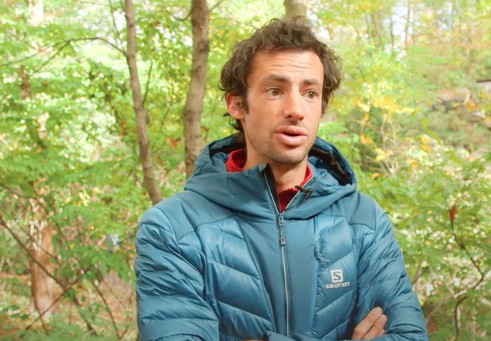
Heimen hit the ground two minutes after takeoff, but Jornet made it to the bottom in a time of 52:26. Heimen’s time was 53:55.
“What surprised me most with the challenge was how fast Kilian is descending the technical and steep Halls Renne with the challenges of loose rocks all the way,” Heimen said. “I know he is very fast going up, and had no doubts that he would beat me to the summit, but I was expecting him to spend more time climbing down than climbing up.”
Jornet’s latest antics add to a constantly growing number of wild races and feats that runners are attempting like Nick Symmonds going for the fastest mile while dribbling a basketball, Mario Mendoza’s 50K treadmill record, or Cynthia Arnold smashing the triple-person stroller marathon record.
Who knows what we’ll see next?
<iframe width="560" height="315" src="https://www.youtube.com/embed/6dgm5MQPGz8" frameborder="0" allow="accelerometer; autoplay; encrypted-media; gyroscope; picture-in-picture" allowfullscreen></iframe>
by Runner’s World
Login to leave a comment
Olympian Nick Symmonds attempts 1:59 marathon pace
Nick Symmonds is the American two-time Olympian in the 800m who attempted Eliud Kipchoge’s 1:59 marathon pace for as long as possible.
Eliud Kipchoge made history. The runner has become the first person to run a marathon in under two hours. Kipchoge finished the historic event in 1:59:40.
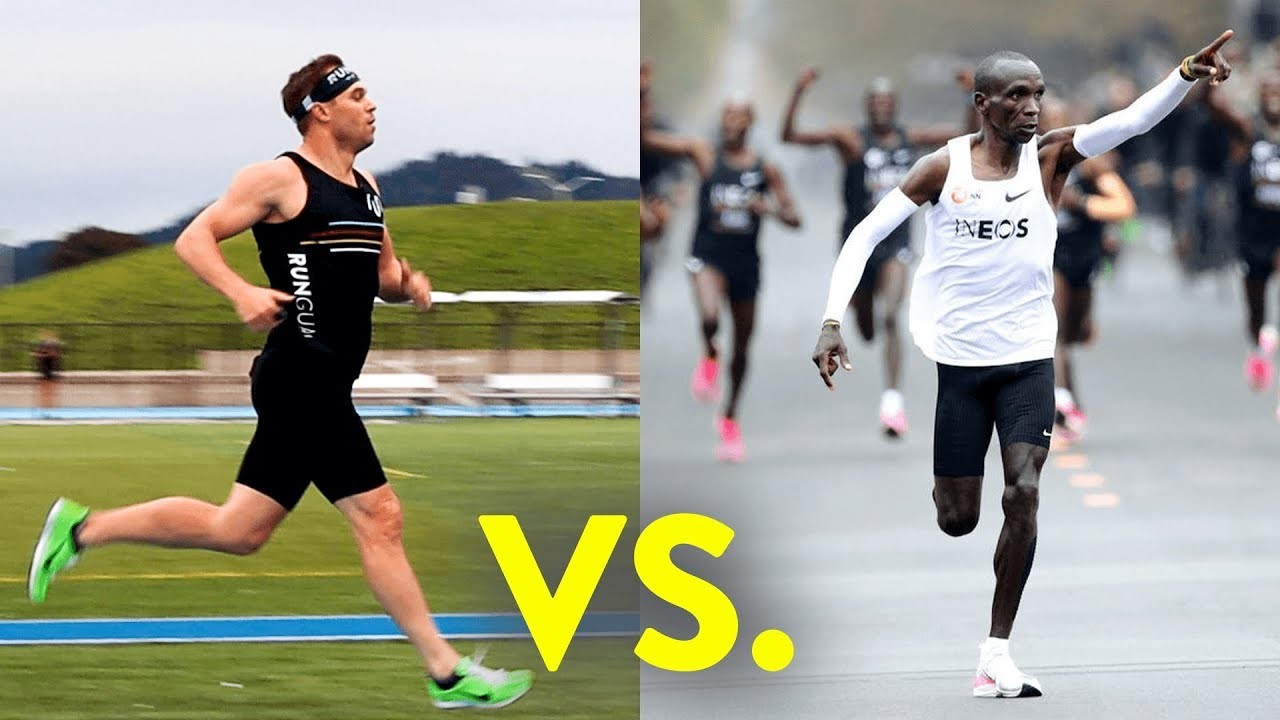
Weeks ago Symmonds, who’s a former professional 800m runner, gave the historic pace a try. He only made it 1K.
The Ineos 1:59 was a beautiful event. The weather was nearly perfect, a little rain (but mostly overcast), with moderate temperatures. Kipchoge was wearing Nike shoes specially created for the event, and his team of pacers executed the race perfectly.
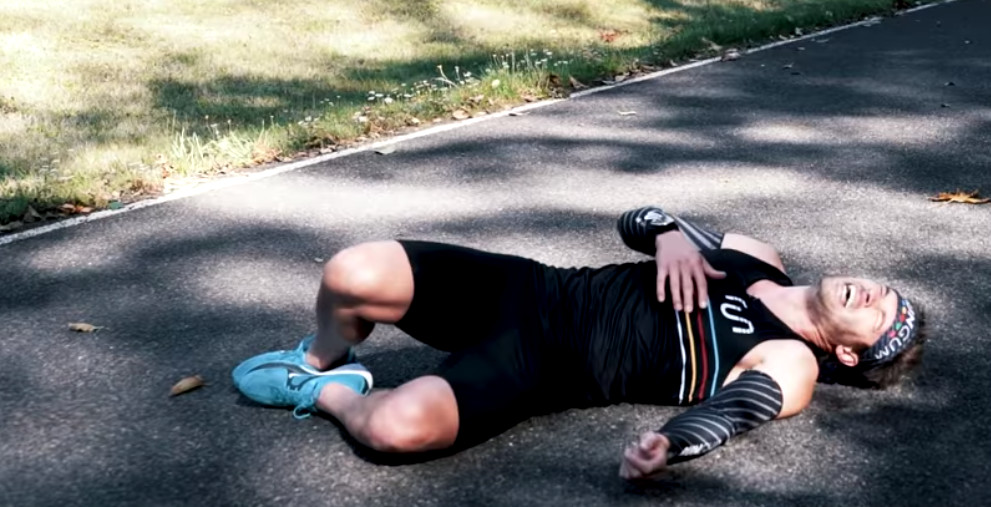
Kipchoge’s 5K pace was a consistent 14:14. According to Athletics Canada, in 2019 only five Canadian men have run under this pace in a 5K race on the roads. His 10K pace was double that at 28:28–our Canadian record is only 11 seconds faster at 28:17.
There are some who believe that Kipchoge’s attempt was too calculated, too contrived and too much about the shoes. Regardless of your stance, it’s clear that 1:59 is insanely fast, especially since a two-time Olympian can only handle this pace for 1K.
by Madeleine Kelly
Login to leave a comment
INEOS 1:59 Challenge
Mankind have constantly sought to reach new frontiers and to achieve the impossible. From Edmund Hillary reaching the summit of Mount Everest to Roger Bannister’s four-minute mile to Felix Baumgartner jumping from space we have frequently redefined the limits of human achievement and broken new barriers previously seen as simply impossible. After the four-minute mile and the ten second 100m...
more...Nick Symmonds Next Marathon Will Be Eugene
Login to leave a comment
Nick Symmonds now wants to break three hours
Login to leave a comment
Nick Symmonds Optimistic About Marathon Debut
Login to leave a comment


